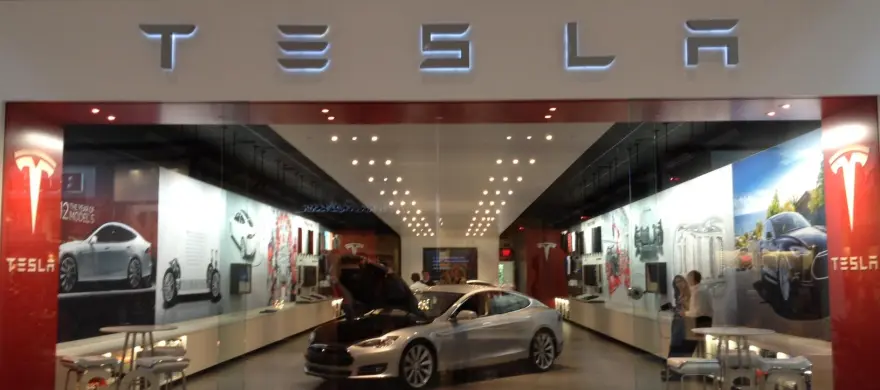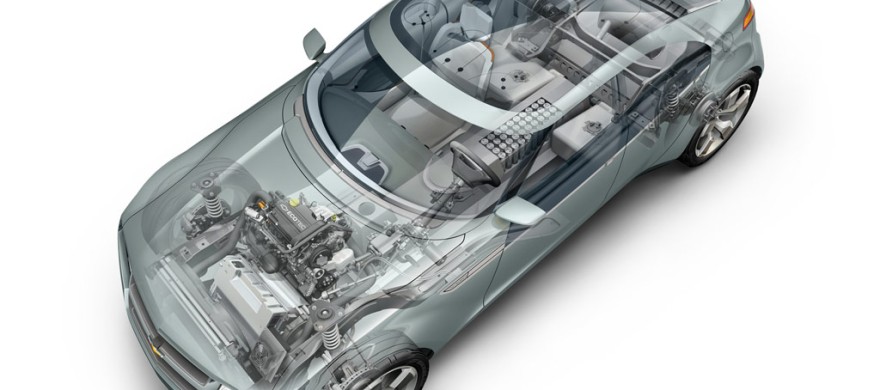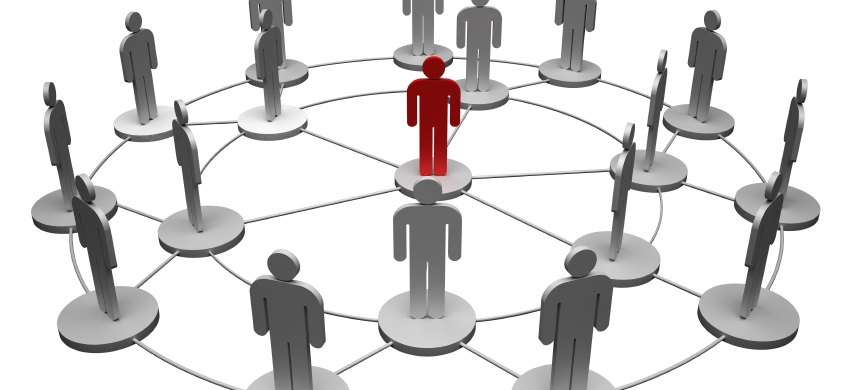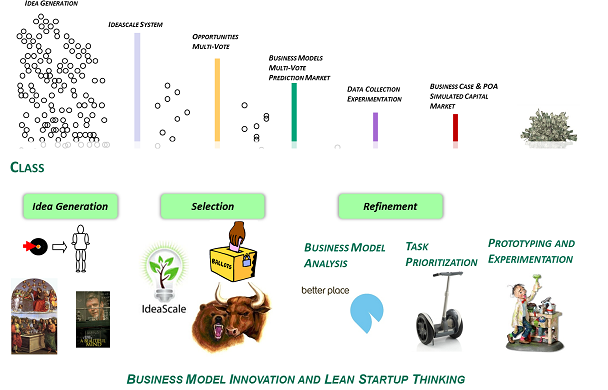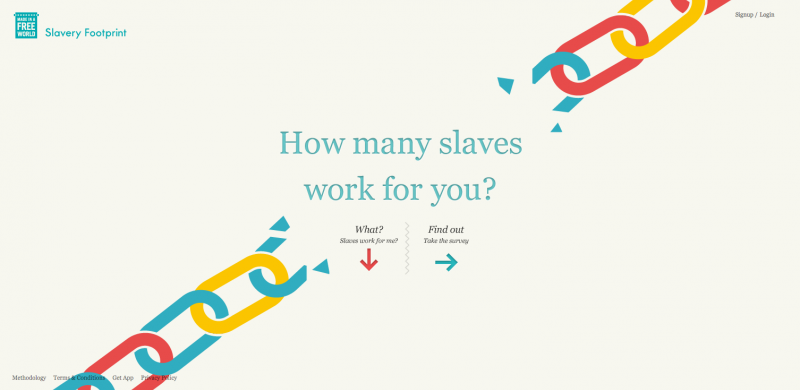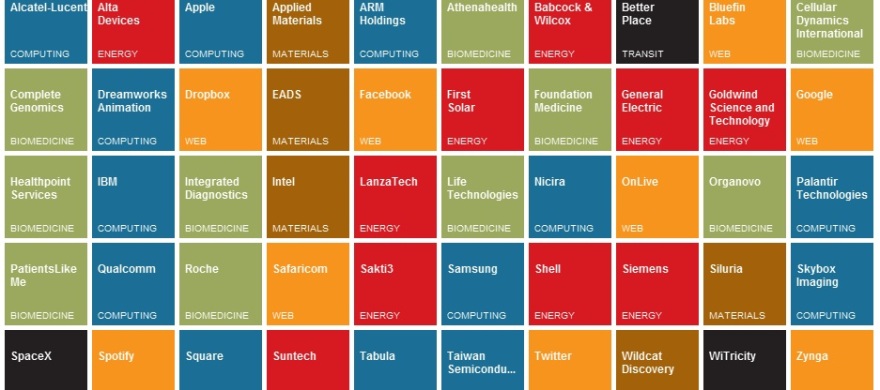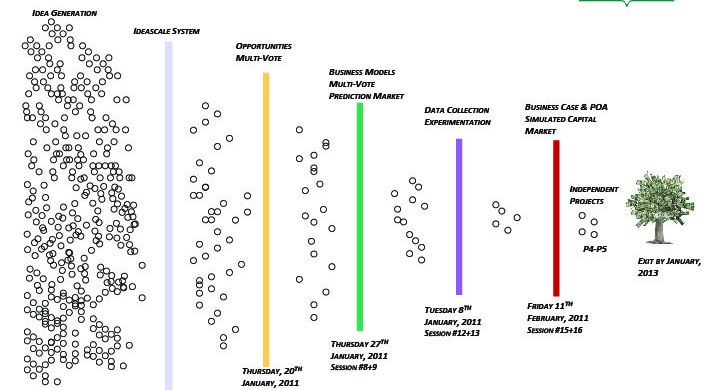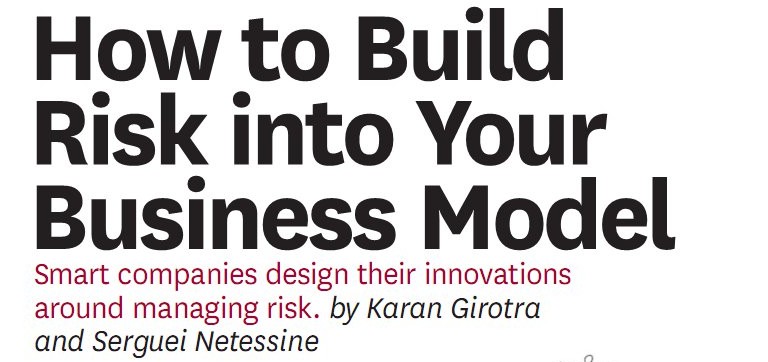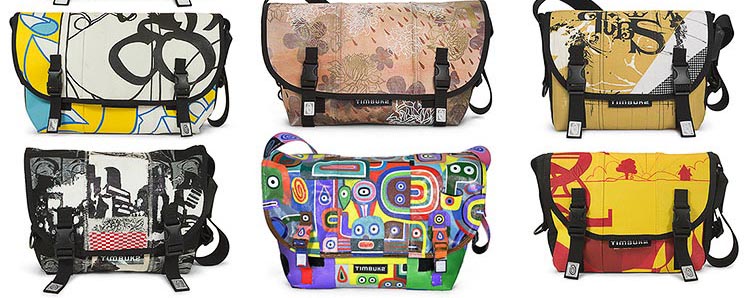Bike sharing could scale up enough to make a real impact on urban air pollution and plug public transport gaps.
The Renaissance Innovator
Thoughts, examples and updates on the Renaissance Innovation Method
 In a recent blog post that first appeared on Harvard Business Blogging Network we discuss International Development. Trying to find solutions for the problems faced by people living at the bottom of the pyramid is frustrating and hugely expensive; experts say that three out of four development projects in Africa fail. PlayPump, a children’s carousel designed to help pump clean water in Africa is a typical example. Despite getting $16 million in funding, it failed to gain traction.
In a recent blog post that first appeared on Harvard Business Blogging Network we discuss International Development. Trying to find solutions for the problems faced by people living at the bottom of the pyramid is frustrating and hugely expensive; experts say that three out of four development projects in Africa fail. PlayPump, a children’s carousel designed to help pump clean water in Africa is a typical example. Despite getting $16 million in funding, it failed to gain traction.
The Geolocation is Enabling Retail Business Model Innovation
Serguei Netessine
Posted on November 13, 2014
 As we describe in our recent Blog on INSEAD@Knowledge, in category after category, Amazon has steadily eroded the market share of traditional bricks-and-mortar retail chains, which seem to be in a state of irreversible decline.
As we describe in our recent Blog on INSEAD@Knowledge, in category after category, Amazon has steadily eroded the market share of traditional bricks-and-mortar retail chains, which seem to be in a state of irreversible decline.
Much of the online giant’s competitive advantage is based on its access to and mastery of rich customer data. Traditional retailers know relatively little about their customers, unless they have a loyalty card and actually buy something – and even this knowledge comes late, after a purchase is made. They have no way to cross sell, recommend new products, or target advertising. Unlike Amazon, they can’t tell if a potential customer visits the store or passes by it without buying anything.
But all that is about to change because traditional retail is starting to wake up to the potential of geolocation, which is giving the new wave of data analytics companies ways to help bricks-and-mortar retailers make up for the data deficit.
 Take San Francisco based BaySensors.com. This company has a product that picks up signals sent by mobile phones, allowing a store to track customers’ movements around and within a store. The store can identify repeat visitors and keep a record of their in-store behaviour—like a physical cookie.
Take San Francisco based BaySensors.com. This company has a product that picks up signals sent by mobile phones, allowing a store to track customers’ movements around and within a store. The store can identify repeat visitors and keep a record of their in-store behaviour—like a physical cookie.
Then there’s Apple’s iBeacon technology, launched last December, which can send consumers geo-located messages about special offers, unique offers, or discounts at shops close-by. Like BaySensors, iBeacon offers bricks-and-mortar retailers a way to replicate digital functionality.
But perhaps the most interesting development in this trend is Flayr,  which has launched a test in Paris that could become the next big hit in retail. The Flayr model draws on online recommendations of people in a consumer’s social media network, combining it with online personal information about the consumer, to draw a potential customer’s attention to particular products and where they can be purchased. In effect, Flayr uses data analytics to bring the customers to the product.
which has launched a test in Paris that could become the next big hit in retail. The Flayr model draws on online recommendations of people in a consumer’s social media network, combining it with online personal information about the consumer, to draw a potential customer’s attention to particular products and where they can be purchased. In effect, Flayr uses data analytics to bring the customers to the product.
What is new with the geolocation feature is that you know exactly when and where the potential customer is ready to shop. Experiments such as those we’ve described suggest that there are two distinct approaches.
Virtual browsing. When you walk close to a certain store, the brand pushes special offers and discounts to your smartphone in a tailored display, a virtual shop window but one that’s fully aligned with your tastes. Why is it so important? You may not have the time to stop and shop at that specific moment. You may not be in the mood. But later and in a quiet cafe, you can review the offers, select what you like, and go buy them.
Context-driven marketing. The retailer can make its product relevant and essential for the users by pushing the offers in moments and places they need them. A retailer group could, for example, tell whether a customer was in Tenerife or Verbier during the Spring break and then push beachwear or skiing products that were available nearby. At present, push marketing that comes in by the phone is not at all smart and surveys show that many consumers find them irrelevant and even annoying. Geolocation technologies like Flayr’s can change this.
These new companies are changing the retail paradigm yet again. Geolocation can tell a retailer precisely when and where which customers might be persuaded to buy which products. Bundling this capability together with information from those customers’ social media networks, the new business model of Flayr offers an alternative to the online catalogue model provided by the likes of Amazon. The barriers to entry that Amazon.com has raised are difficult and expensive to overcome only if you accept that Amazon’s model is dominant. But these new technologies offer bricks-and-mortar stores a way to compete using their existing assets, if they’re smart enough to seize the opportunity.
The window may not be open that long, however. Amazon.com has just announced the opening of its own first bricks-and-mortar store in New York City.
This post is co-authored by Christophe Pennetier, a PhD Student at INSEAD. He focuses his research on start-ups and business model innovation. You can follow him on Twitter @cpennetier and on Google Plus at +ChristophePennetier.
We now have a date: September 9, the day that iPhone6 is expected to be launched. While there is a still a month to go , the iPhone launch circus and its usual cast of characters are all already in town. The tech media is leaping on every bit of information that can be inferred from the Apple supply chain about the potential specs of the phone (for the record we are expecting Apple to introduce a big screen brother to the current phone and produce it in record numbers).
But the business press is decidedly less excited: a bigger iPhone is hardly the category busting game changer they have been calling for. Some have even gone as far as speculating that Apple under Tim Cook has lost its creative mojo.
Is Tim Cook’s Apple really that different from Steve Job’s? A careful analysis of the facts suggests not:
 Last week Elon Musk, the iconoclastic CEO of Tesla Motors declared that Tesla would effectively allow any competitor to use its patents portfolio. Shortly after, BMW and Nissan announced that they wanted to cooperate with Tesla on technology and standards. Between them, these three carmakers own almost all the market for electric vehicles and as such are natural competitors. So what motivates this recent cooperation: is it just good PR, is it plain altruism, or is there something more calculated?
Last week Elon Musk, the iconoclastic CEO of Tesla Motors declared that Tesla would effectively allow any competitor to use its patents portfolio. Shortly after, BMW and Nissan announced that they wanted to cooperate with Tesla on technology and standards. Between them, these three carmakers own almost all the market for electric vehicles and as such are natural competitors. So what motivates this recent cooperation: is it just good PR, is it plain altruism, or is there something more calculated?
Tesla has challenged the automotive business model on other occasions: it disintermediated car dealerships and then adopted a switching station model. Giving up the patent portfolio is a similar move that challenges the traditional business model. At the core of these moves is the realization that the conventional auto business model simply doesn’t work for electric vehicles.

By now, you’ve likely heard of Uber’s staggering US$1.2 billion funding round that values the business at US$ 18.2 billion. One can debate the merits of the valuation, but whatever your opinion, the folks at Uber will have a ton of resources to fund their next strategic move. So to us the interesting question is what Uber should do with the money and, perhaps more importantly, what it shouldn’t.
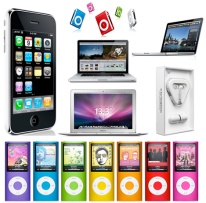 The iPhone 6 is due in September. And this forthcoming event stimulated our recent blog post on Harvard Blog Network.
The iPhone 6 is due in September. And this forthcoming event stimulated our recent blog post on Harvard Blog Network.
The build-up to its launch will almost certainly follow the Steve Jobs M.O. Device specifications will remain a closely guarded secret until the launch date (unless an employee forgets his phone at a bar). There will be long lines at stores. We probably won’t be able to actually get the product for a couple of months after the launch. And, of course, users (we) will have no input into what we actually get; Steve Jobs’ dictum that “people don’t know what they want until you show it to them” is still an act of faith for Apple’s management.
But is this the only way to launch new products? Let’s think for a second about the risks inherent in this approach. Imagine that something goes wrong and a hardware glitch makes it necessary to recall and/or repair all products (remember the iPhone4 Antenna problem)? Or what if a certain feature or the device as a whole is a complete miss with consumers (think Apple Maps)?
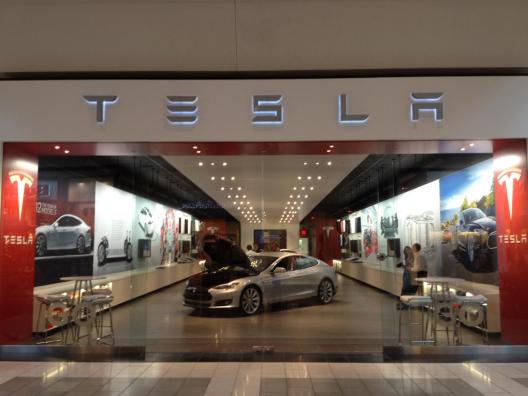 Last week New Jersey started enforcing a ban on direct sales by Tesla Motors of its path-breaking model S. Tesla’s direct sales have also run into hot water in a number of other states: Ohio lawmakers are debating a ban on Tesla’s direct sales and Texas, Arizona, and Virginia are also opposed. Proponents of a ban on direct sales claim that they are acting in the interest of customers. But is it the interests of customers they’re following or rather the bidding of the powerful car dealership lobby?
Last week New Jersey started enforcing a ban on direct sales by Tesla Motors of its path-breaking model S. Tesla’s direct sales have also run into hot water in a number of other states: Ohio lawmakers are debating a ban on Tesla’s direct sales and Texas, Arizona, and Virginia are also opposed. Proponents of a ban on direct sales claim that they are acting in the interest of customers. But is it the interests of customers they’re following or rather the bidding of the powerful car dealership lobby?
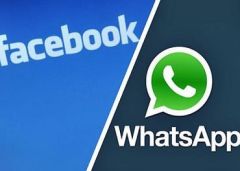 We could not miss the news of acquisition of WhatsApp by Facebook, so we covered it in the recent post on HBR Blogging Network. With $19 billion, Facebook could have purchased Sony or Gap or four aircraft carriers. Instead, it bought WhatsApp, a tiny startup that so far had accumulated barely $60 million in funding, mostly from Sequoia. This is nuts, you might say; although the world of mobile messaging is upon us, that is an awful lot of money.
We could not miss the news of acquisition of WhatsApp by Facebook, so we covered it in the recent post on HBR Blogging Network. With $19 billion, Facebook could have purchased Sony or Gap or four aircraft carriers. Instead, it bought WhatsApp, a tiny startup that so far had accumulated barely $60 million in funding, mostly from Sequoia. This is nuts, you might say; although the world of mobile messaging is upon us, that is an awful lot of money.
But think about what exactly Facebook is buying:
Would “back to basics” be a superior business model for Groupon?
Serguei Netessine
Posted on December 31, 2013
 To finish the year with a blog post, we recently discussed Groupon’s business model on HBR blogging network. Not long ago, there was this multi-billion dollar company called Groupon that was going to revolutionize the business of bargains, whose founders turned down a $6 Billion offer from Google. Yet the revolution never came.
To finish the year with a blog post, we recently discussed Groupon’s business model on HBR blogging network. Not long ago, there was this multi-billion dollar company called Groupon that was going to revolutionize the business of bargains, whose founders turned down a $6 Billion offer from Google. Yet the revolution never came.

